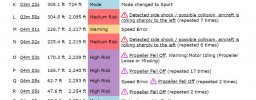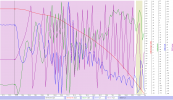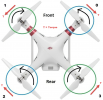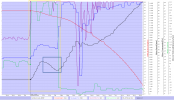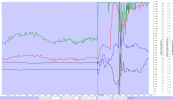DJI Flight Log Viewer - PhantomHelp.com
Hi all, so a few years back I was getting some aerial footage with my Mavic Pro out by the Griffith Observatory. As I was buzzing around I noticed my camera feed started tumbling out of the blue, but I didn't think much of it because I had a similar experience with a camera malfunction. I hit the return to home button...and nothing happened. It wasn't until then that I realized my Mavic was in a free fall for seemingly no reason. I was line of sight and saw nothing near the drone when this happened (not to say I couldn't have missed some sort of small bird I guess). Upon retrieval...which took a good two hours of searching in brush, I found it bad a couple busted props (only the front two if this means anything) and cables, but nothing too serious. Thankfully a bush somewhat softened the fall. I have been meaning to fix it for a while, but have kept putting it off mostly out of fear that the same thing would happen again. Anyway, all the background out of the way, I am mostly curious if there are any obvious signs of what went wrong here? I noticed in the logs there seemed to be some sort of undervoltage in the battery a few seconds prior to the incident starting at 3m 46.8s, but that is the only thing that stick out to me. I want to know if I need to potentially replace more than just the busted cables (such as a motor or battery). I am getting back into insurance photography and really don't want to have a drone stranded on a rooftop. For reference the first sign of tumbling starts at 3m 58.1s in the logs. Thanks!
Hi all, so a few years back I was getting some aerial footage with my Mavic Pro out by the Griffith Observatory. As I was buzzing around I noticed my camera feed started tumbling out of the blue, but I didn't think much of it because I had a similar experience with a camera malfunction. I hit the return to home button...and nothing happened. It wasn't until then that I realized my Mavic was in a free fall for seemingly no reason. I was line of sight and saw nothing near the drone when this happened (not to say I couldn't have missed some sort of small bird I guess). Upon retrieval...which took a good two hours of searching in brush, I found it bad a couple busted props (only the front two if this means anything) and cables, but nothing too serious. Thankfully a bush somewhat softened the fall. I have been meaning to fix it for a while, but have kept putting it off mostly out of fear that the same thing would happen again. Anyway, all the background out of the way, I am mostly curious if there are any obvious signs of what went wrong here? I noticed in the logs there seemed to be some sort of undervoltage in the battery a few seconds prior to the incident starting at 3m 46.8s, but that is the only thing that stick out to me. I want to know if I need to potentially replace more than just the busted cables (such as a motor or battery). I am getting back into insurance photography and really don't want to have a drone stranded on a rooftop. For reference the first sign of tumbling starts at 3m 58.1s in the logs. Thanks!
Last edited:



